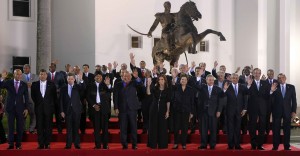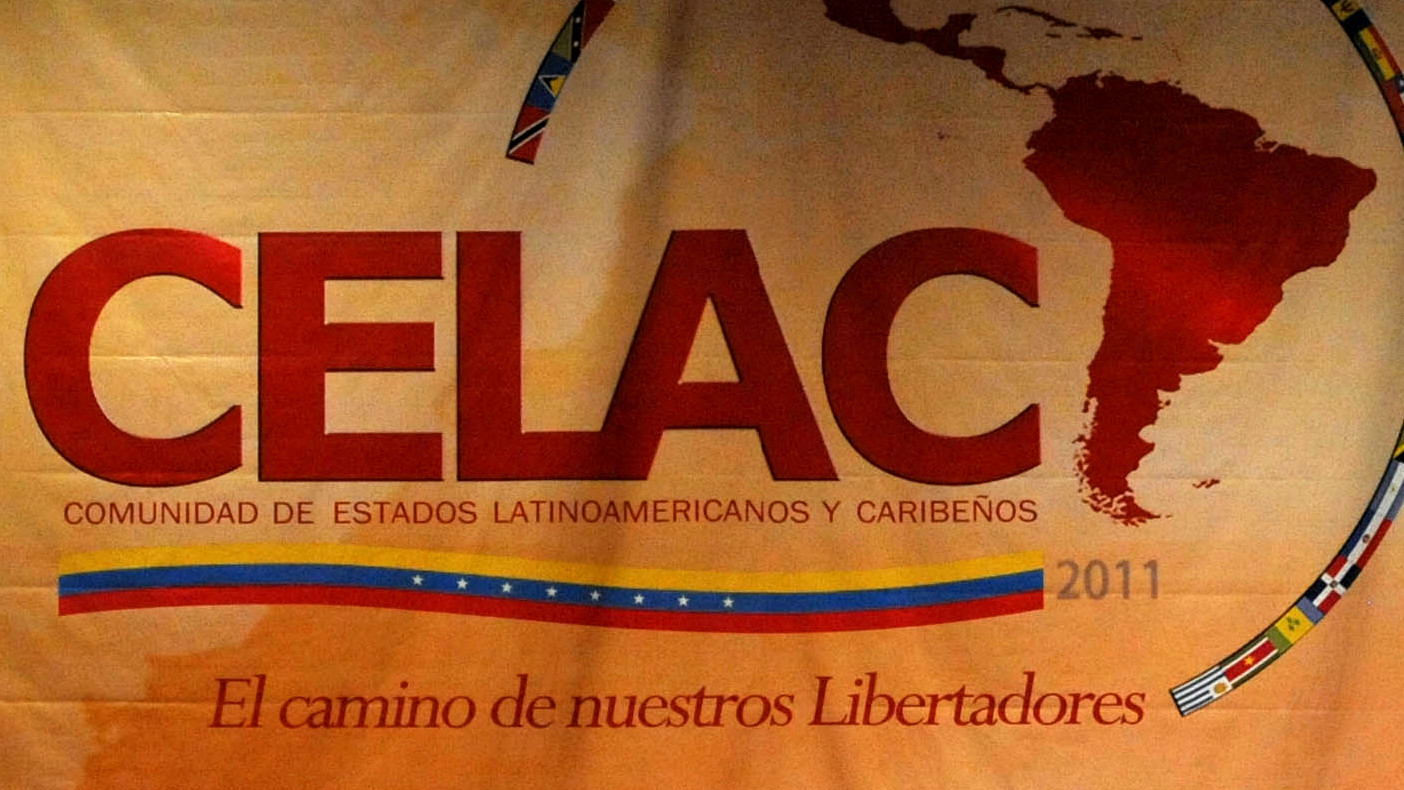As one exercise in regional integration keeps disintegrating on one side of the Atlantic, another surges to the South of the Rio Grande. Last week, the leaders of 30 nations of the Americas met to celebrate the second summit of the Community of Latin American and Caribbean States (CELAC, in its Spanish initials). The newly-minted multilateral organization has started to build up steam, with two successful summits under its belt and a score of declarations signed by its member countries. Fast becoming the main forum for international discourse in the region, the CELAC is also noteworthy for what it’s not, or rather who is not in it.

The organization includes all the countries in the Americas except for the United States and Canada, a peculiarity that many would say is CELAC’s defining feature. This distinction was certainly emphasized by Cuban president Raul Castro, who hosted the latest summit in Havana. Hugo Chavez – the late Venezuelan president and fervent left-wing ideologue – would most certainly agree with him, especially considering the CELAC was his brainchild. The whole point of the CELAC, it would seem, is to unite its member states through an implicit rejection of the dominant hemispheric governing body, the Organization of American States.
The OAS, a multilateral organization that does include the US and Canada, was born out of several attempts at regional collaboration during the first decades of the 20th century. Eventually, the US-led organization became the largest forum for establishing economic, political and social agendas across the Americas. The most notable of these are its pledges to fight communism across the region, protect the sovereignty of its members, spread democracy, and strengthen commercial ties across the continent. Not surprisingly, the OAS is also notable for whom it doesn’t include: Cuba.
Seven decades after the establishment of the OAS, most of Latin America has suffered interventions (overt or covert) from the US. The fight against communism apparently trumped the pledge for democracy during the years of brutal US-backed dictatorships, and the spread of neoliberalism has, in the opinions of many, left several of the region’s economies crippled under the economic weight of the North. Hugo Chavez was not alone when proclaiming the organization to be a tool for the modern iteration of the Monroe Doctrine. Perhaps most importantly, the OAS kicked Cuba out in the early sixties, and maintained an implicit support for the Cuban embargo in the face of almost unanimous criticism in the region. Despite recent attempts of rapprochement, Cuba has sworn off the Inter-American ideal espoused by the OAS and has refused participate in the multilateral organization. Placing its bets on a regionalism centered on the idiosyncrasies of the South, the island country quickly signed on when plans for the creation of CELAC were announced.
Declarations focused on the member countries’ commitments to decrease inequality, provide better universal health and education services, and establish a the region as a “zone of peace.” The War on Drugs, Cuba’s liberalization and other issues dear to the United States were hardly mentioned or omitted. In fact, Cuba’s attempts to expand ties dominated the summit, with the mandatories of many countries meeting with the Castro brothers. Brazilian President Dilma Rousseff even attended the inauguration of an expanded, Brazilian-built port zone at Mariel – the same port from where thousands of émigrés left to the US during an immigration grace period in the 80’s. The Cuban-Brazilian venture comes to fruition as multilatinas, or distinctly Latin-American multinational corporations, are gaining ground across the region.
Exploiting its mounting importance, the CELAC has also been formalizing economic ties with Russia, India and China. Setting itself up as a mechanism of economic integration as well as a social and political one, it places itself squarely on the side of developing economies, attempting to join the rising tide of countries from the Global South that are restructuring the world economy
Despite all of this, the question remains: Will the CELAC actually achieve anything, or is it just one of the many attempts to realize a centuries-old dream of Latin American integration?
For such a large organization, the CELAC’s origins are worryingly based in ideology rather than substance. As the pet project of Chavez, a die-hard regionalist as well as a dedicated anti-imperialist, the organization has an implicit leftist logic behind its reasoning. This was evident during the Havana Summit, where traditional left-wing campaigns in the region – Argentina’s fight over the Falklands/Malvinas, Ecuador’s environmental lawsuit against Chevron, Puerto Rico’s fight for independence – were mentioned and given symbolic support from member countries. This is not a problem per se, and could in fact lead to great developments, but the neopopulism that has taken hold in countries like Venezuela, Bolivia and Argentina has proven to be better at condemning the North than at solving the problems of the South. Elevated to a regional scale, this sort of rhetoric won’t really lead to much progress in terms of real political or economic goals.
There is also the fact that the CELAC is still a fledgling organization, with no secretariat and no full-time staff. Unlike the OAS, it does not yet boast tremendous economic resources or personnel. Yet it faces the challenges of improving conditions in a region plagued by extreme poverty, violence, corruption and drastic economic disparities. Justifiably, many wonder if the summits will not just become a celebratory pat in the back for leaders who make pleasant, but ultimately vapid, pronouncements.
Perhaps what will make or break the CELAC will be its capacity to integrate the region economically. A trading bloc focused on creating ties with markets other than the US would be a great boon to countries struggling to move their products beyond the Americas, as well as for regional giants like Mexico and Brazil.
For now, what seems evident is that much of Latin America is eagerly looking for an alternative to the skewed relations of the OAS-dominated past. In the words of UN Secretary General Ban Ki-Moon – who attended the CELAC’s Havana Summit – the region still faces major challenges, but its countries now have a tool to face their obstacles together. It is too early to say how they will choose to do so, or how the actions of the CELAC will transform international relations in the region. However, if the Havana Summit is any indication, the spirit of regional unification first espoused by Simón Bolivar is now stronger than ever.
Image Credit: Casa Rosada (Argentina Presidency of the Nation), Logo Celac, CC BY-SA 2.0
